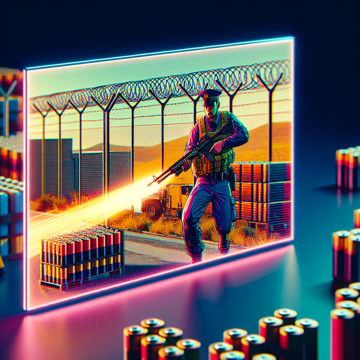Quantum Teleportation, Satellites, and DIY Robots: The Wild, Wired Future of Everything-on-Demand

Blink, and the future’s already downloaded to your driveway, orbit, and pocket. Just as quantum physicists are teleporting data over the same optical fibers we binge Netflix on, battery behemoths like CATL are shattering the five-minute-charging barrier for electric vehicles. Meanwhile, Amazon’s firing up its own satellite swarm to beam broadband from orbit, and automakers are stuffing AI copilots and holographic dashboards into EVs that feel more like rolling living rooms than cars. Oh, and if you’re itching to build your own robot army? Off-the-shelf microcontrollers and 3D-printed RC transmitters mean you don’t need a billion-dollar R&D budget—just a soldering iron and some ambition[1][2][3][4][5].
Start with the quantum leap: researchers have finally managed to teleport information over ordinary internet fibers, not just the pricey, dedicated ones. This means the magical-sounding “quantum teleportation” could soon power ultra-secure, blazing-fast data links between quantum computers across cities—without digging up roads to lay new cables. Forget “faster internet,” we’re talking about a new class of computation, able to solve chemistry puzzles and materials science problems that make even today’s supercomputers cry uncle. It’s not about crunching terabytes of cat videos, but about unlocking breakthroughs, from sustainable energy to drug design, that hinge on mind-boggling math[1].
All this data-hungry, compute-heavy innovation needs juice. Enter CATL, whose batteries are making today’s “fast-charging” EVs look like dial-up modems. With 520 kilometers of range in five minutes—even when it’s freezing outside—these batteries are an adrenaline shot for electric mobility. Add in sodium-ion chemistry, and suddenly the world’s not shackled to lithium supplies or fire risks. And CATL’s dual-battery monster? That’s a 1,500km road trip with no pit stops. The only catch: thanks to trade wars, American roads may not see these power cells anytime soon. But the writing’s on the wall: the EV arms race just went nuclear[2].
Of course, you can’t drive or code if you’re off the grid. Enter Amazon’s Project Kuiper, hurling satellites skyward to duke it out with SpaceX’s Starlinks. With thousands of satellites promising blanket broadband coverage, even the most remote tinkerers and makers are getting a seat at the global digital table. The satellites are now shiny enough to avoid blinding astronomers (mostly), but their orbital ballet means low-latency internet for everything—whether you’re streaming, simulating quantum circuits, or piloting robots in the backyard[3].
And cars? They’re morphing into sci-fi lounges. At CES, automakers flaunted AI copilots that chat back, panoramic and holographic displays that serve up entertainment and keep your eyes on the road, plus dashboards that morph based on where you sit. The point? Transform vehicles into personalized, updatable platforms—your phone, your assistant, and your home office—all on wheels. The challenge: keeping things simple enough to avoid digital distraction, while complex enough to dazzle buyers[4].
But why wait for megacorps to deliver the future when you can hack it together yourself? Makers like Oscar are cobbling together remote controllers for robots and quadcopters from Arduino boards, joysticks, and wireless modules. No need for Kickstarter vaporware; just print, solder, and script your way into the drone age. With quantum teleportation, orbital internet, AI copilots, and DIY robotics all converging, the boundaries between pro, hobbyist, and mad scientist are blurring fast. The future won’t just be delivered—it’ll be made, hacked, and driven by anyone bold enough to build it[5].
1. https://badgerherald.com/news/science-news/2025/03/05/teleporting-data-over-internet-with-quantum-computing/
2. https://www.theverge.com/news/652762/catl-china-ev-battery-charging-sodium-ev-range
3. https://www.kplctv.com/2025/04/28/amazon-launches-its-first-internet-satellites-compete-against-spacexs-starlinks/
4. https://www.thestar.com.my/tech/tech-news/2025/01/09/from-ai-assistants-to-holographic-displays-automakers-showcase-in-cabin-experiences-at-ces-2025
5. https://hackaday.com/2013/10/04/a-diy-solution-for-controlling-robots-and-quadcopters/